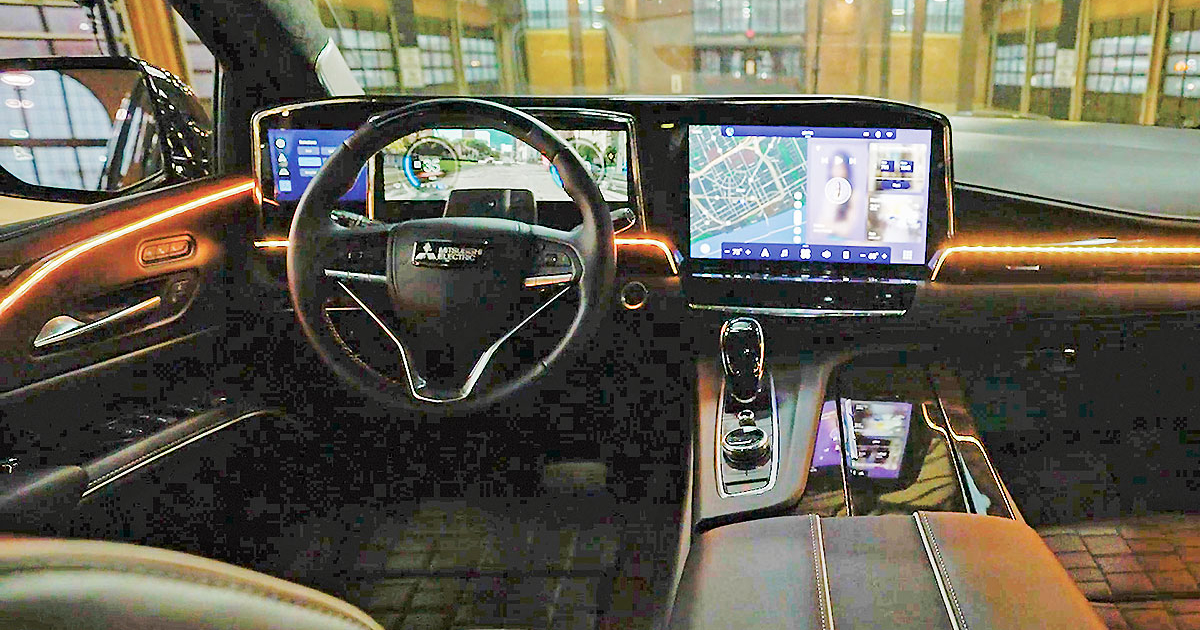
Mitsubishi Electric‘s new in-cabin system can detect potholes, black ice and other hazardous road conditions and relay that information to the driver through the vehicle’s display.
It’s intended to show a driver, on the infotainment screen, where hazardous conditions are on the road ahead.
The system uses basic automotive cameras, as well as lidar sensors that were custom-made for the supplier’s larger in-cabin system called Project Jabiru, said Michael Horani, director of advanced development at Mitsubishi Electric. Jabiru debuted in April to showcase the technologies the supplier intends to roll out on future vehicles.
Horani spoke with Staff Reporter John Irwin about the system’s road monitoring capabilities. Here are edited excerpts.
Q: How does this system work?
A: It uses lidar to emit light and measure the reflectivity of the road surface. If there’s a sheet of ice, you’re going to have a higher level of reflectivity compared to a dirt road, which won’t reflect much. That’ll give us a gauge of the surface condition, of how snowy or slushy or frozen it is versus dirt or gravel or just regular asphalt with nothing on it. Pair that with our camera, which looks at the road and at the overall image brightness, and we can build an understanding to say with good confidence what the road conditions will be ahead.
Does it require its own cameras or lidar systems, or can it use a vehicle’s existing sensor suite?
The camera is nothing special. It’s something that could be available off the shelf or already in automotive applications.
Obviously, the better quality, the better sensing we can do. The lidar sensors were custom for this particular engagement, but we’re looking at ways to use existing lidar in high-end cars now. This was just to proof the concept. The longer-term plan is to leverage lidar in the vehicle.
When do you expect the system to go into production?
It could roll out soon, but it depends on the application. In trucks or buses, it’s possible to move faster because the solution is customizable. For mass deployment in lightweight passenger vehicles, that might need a little more time, maybe three or four years, until we figure out how to fit it into existing architectures.